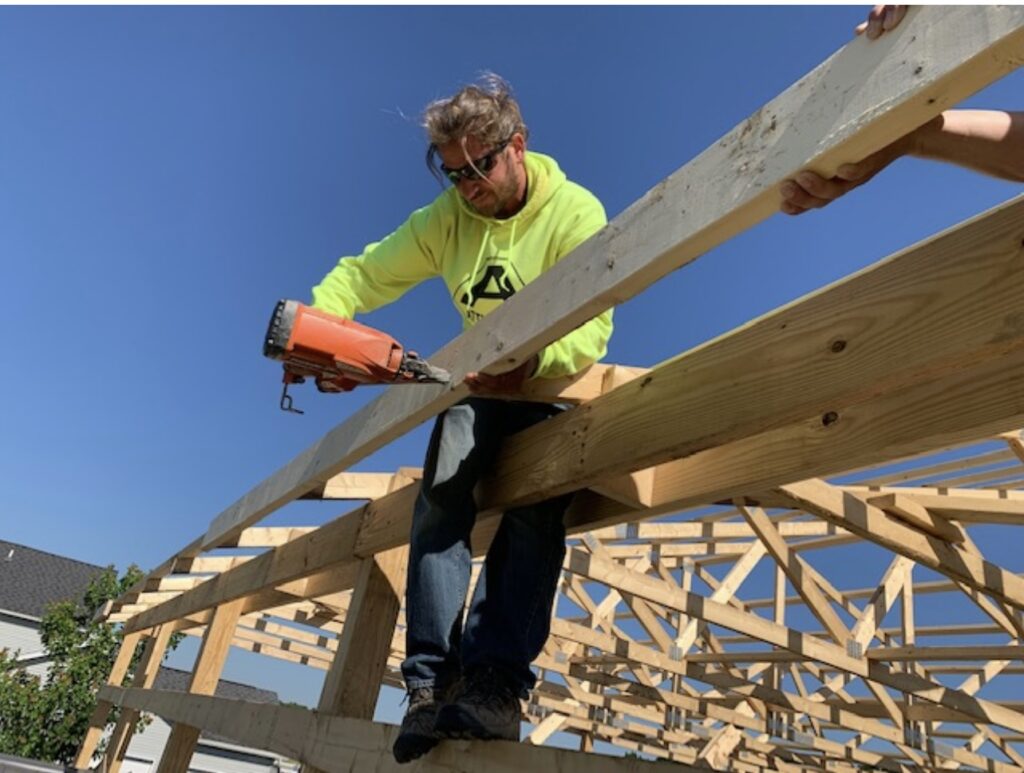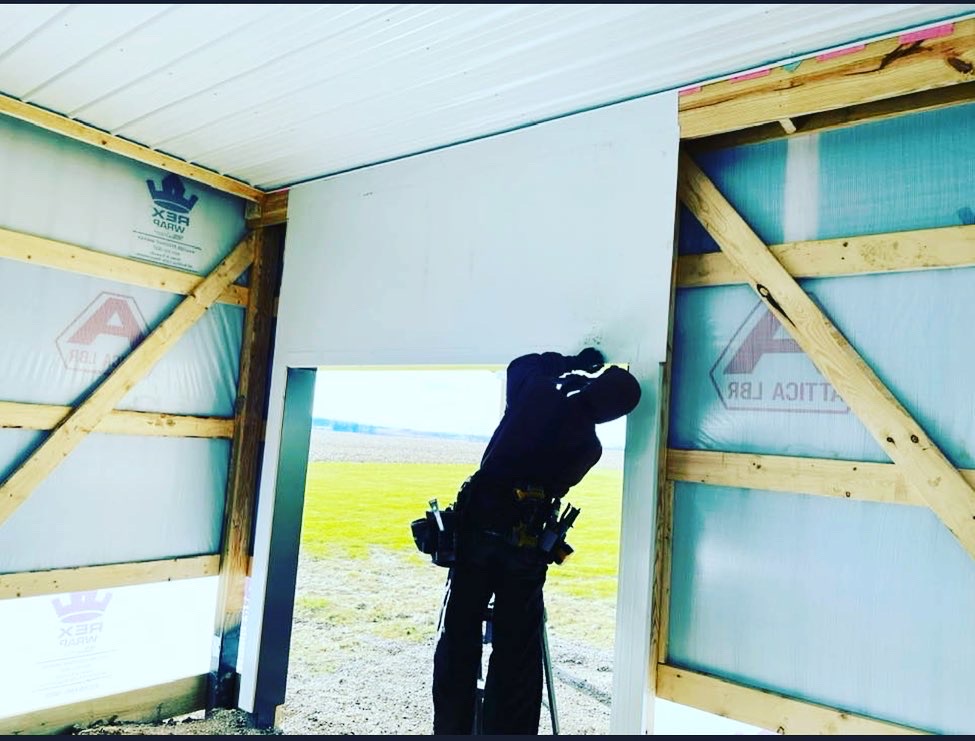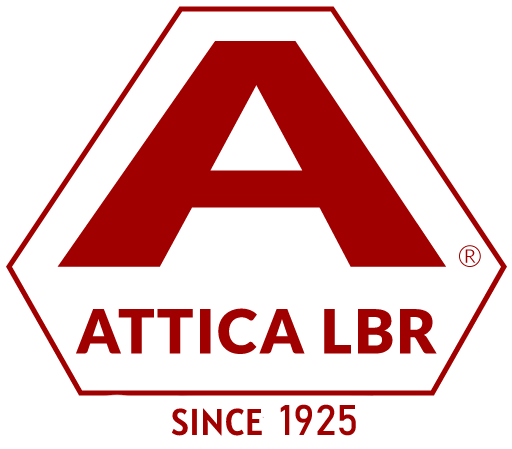The Top 5 Fasteners Used In Pole Barn Construction
By Jenny Moses
Post frame construction, also known as Pole Barn Construction, is a popular building method for agricultural and commercial structures. When building a post frame structure, choosing the right fasteners is crucial to ensure the strength and durability of the building. In this article, we will compare the five types of fasteners used in post frame construction.
Table of Contents

Nails
Nails are the most common type of fastener used in post frame construction due to their low cost and ease of use. They are available in different sizes and materials, including galvanized, stainless steel, and copper. Nails are driven into the wood using a hammer or nail gun and rely on friction and compression to hold the wood together.
One of the benefits of nails is their simplicity and ease of installation. They can be quickly and easily hammered into the wood, making them an efficient choice for large-scale projects. Additionally, nails are widely available and inexpensive, making them a cost-effective option for budget-conscious builders.
However, nails also have several limitations. One of the primary limitations is their holding power. Nails rely on friction and compression to hold the wood together, which can be problematic in certain applications. Over time, the wood can shrink or expand, causing the nail to become loose or even fall out. Additionally, nails are prone to bending or breaking under heavy loads or stress, which can compromise the structural integrity of the building.
Another limitation of nails is their susceptibility to corrosion. Over time, moisture and exposure to the elements can cause nails to rust and corrode, which can weaken the hold and compromise the stability of the building.
Screws
Screws are another popular option for fasteners in post frame construction. They offer several benefits over nails, including a higher load-carrying capacity and greater resistance to loosening and corrosion.
One of the primary benefits of screws is their holding power. Screws are designed with threads that grip the wood more securely than nails, providing a stronger and more reliable connection. Additionally, screws are less likely to loosen or back out over time, which can be a significant concern in structures that are subject to vibration or movement.
Screws are also more resistant to corrosion than nails. Many screws are coated with a corrosion-resistant finish, such as zinc or epoxy, which helps to protect them from the elements and prolong their lifespan. This makes screws a better option for outdoor applications, where exposure to moisture and other environmental factors can be a concern.
However, screws also have some limitations. One of the primary limitations is their cost and installation time. Screws are typically more expensive than nails, and they require a drill or screw gun for installation, which can add time and labor costs to the project. Additionally, screws can sometimes split the wood if they are not installed correctly or if they are used in dense or hard woods. This can weaken the overall structure of the building and compromise its integrity.
Bolts
Bolts are another type of fastener commonly used in post frame construction. Bolts are designed to provide a high-strength connection between two or more pieces of wood, and they offer several benefits over nails and screws.
One of the primary benefits of bolts is their high load-carrying capacity. Bolts can withstand significant weight and pressure, making them ideal for heavy-duty applications where strength and stability are paramount. Additionally, bolts are designed to resist shear and tension forces, which can be especially important in structures that are subject to wind or seismic activity.
Bolts are also more reliable than other fasteners, as they are less prone to loosening over time. This is because bolts are installed with a nut and washer, which provides a secure and tight connection that resists movement and vibration. Additionally, bolts are less likely to split the wood than screws, which can be a concern in dense or hard woods.
However, bolts also have some limitations. One of the primary limitations is their cost and installation time. Bolts are typically more expensive than nails and screws, and they require specialized tools and equipment for installation, which can add time and labor costs to the project. Additionally, bolts require pre-drilled holes, which can be time-consuming and labor-intensive, especially in large-scale projects. This can add to the overall cost and complexity of the construction process.
TimberLOK
TimberLOK screws are a specific type of screw that are designed for use in timber framing and post frame construction. They offer several benefits over traditional screws, including a higher load-carrying capacity and ease of installation.
One of the primary benefits of TimberLOK screws is their high load-carrying capacity. These screws are designed with a unique thread pattern that provides a strong and secure connection between the wood members. Additionally, the shank of the screw is specifically designed to resist bending and breaking, making them a reliable option for heavy-duty applications.
TimberLOK screws are also easier to install than traditional screws. They are designed with a hex-head drive system that can be installed with a standard drill or impact driver, which can save time and labor costs. Additionally, TimberLOK screws do not require pre-drilled holes, which can reduce the amount of time and effort required for installation.
Another benefit of TimberLOK screws is their resistance to corrosion. These screws are coated with a proprietary finish that provides excellent resistance to corrosion and rust, making them a reliable option for outdoor applications.
However, TimberLOK screws also have some limitations. One of the primary limitations is their cost. TimberLOK screws are typically more expensive than traditional screws, which can add to the overall cost of the project. Additionally, they are not as widely available as other types of fasteners, which can make them more difficult to source.
Structural Screws
Structural screws are another type of fastener commonly used in post frame construction. They offer several benefits over traditional screws, including a high load-carrying capacity and ease of installation.
One of the primary benefits of structural screws is their high load-carrying capacity. These screws are designed to resist shear and tension forces, making them ideal for heavy-duty applications where strength and stability are paramount. Additionally, structural screws are typically longer than traditional screws, which allows them to penetrate deeper into the wood members and provide a stronger connection.
Structural screws are also easier to install than traditional screws. They are designed with a hex-head drive system that can be installed with a standard drill or impact driver, which can save time and labor costs. Additionally, structural screws do not require pre-drilled holes, which can reduce the amount of time and effort required for installation.
Another benefit of structural screws is their resistance to corrosion. Many structural screws are coated with a proprietary finish that provides excellent resistance to corrosion and rust, making them a reliable option for outdoor applications.
However, structural screws also have some limitations. One of the primary limitations is their cost. Structural screws are typically more expensive than traditional screws, which can add to the overall cost of the project. Additionally, they may require specialized tools and equipment for installation, which can increase labor costs. In conclusion, choosing the right fasteners for post frame construction is essential to ensure the strength and durability of the building.
Nails are a cost-effective and easy-to-install option but have a limited load-carrying capacity. Screws offer a higher load-carrying capacity and are less likely to loosen or back out over time but can be more expensive and time-consuming to install. Bolts offer superior holding power but are the most expensive and time-consuming option. Timberlok screws and structural wood screws are specialized fasteners designed specifically for post frame construction and offer superior holding power and durability. Ultimately, the choice of fasteners will depend on the specific application and budget of the project.
Pole Barn Fasteners Discussion https://www.contractortalk.com/threads/polebarn-truss-carrier-fastening-grk-lags.428741/
Pole Barn Fasteners Discussion https://www.tractorbynet.com/forums/threads/pole-build-structural-screws-vs-pole-barn-nails-carriage-bolts.448580/
Pole Barn Fasteners Discussion https://www.garagejournal.com/forum/threads/post-frame-pole-barn-hardware.462742/

